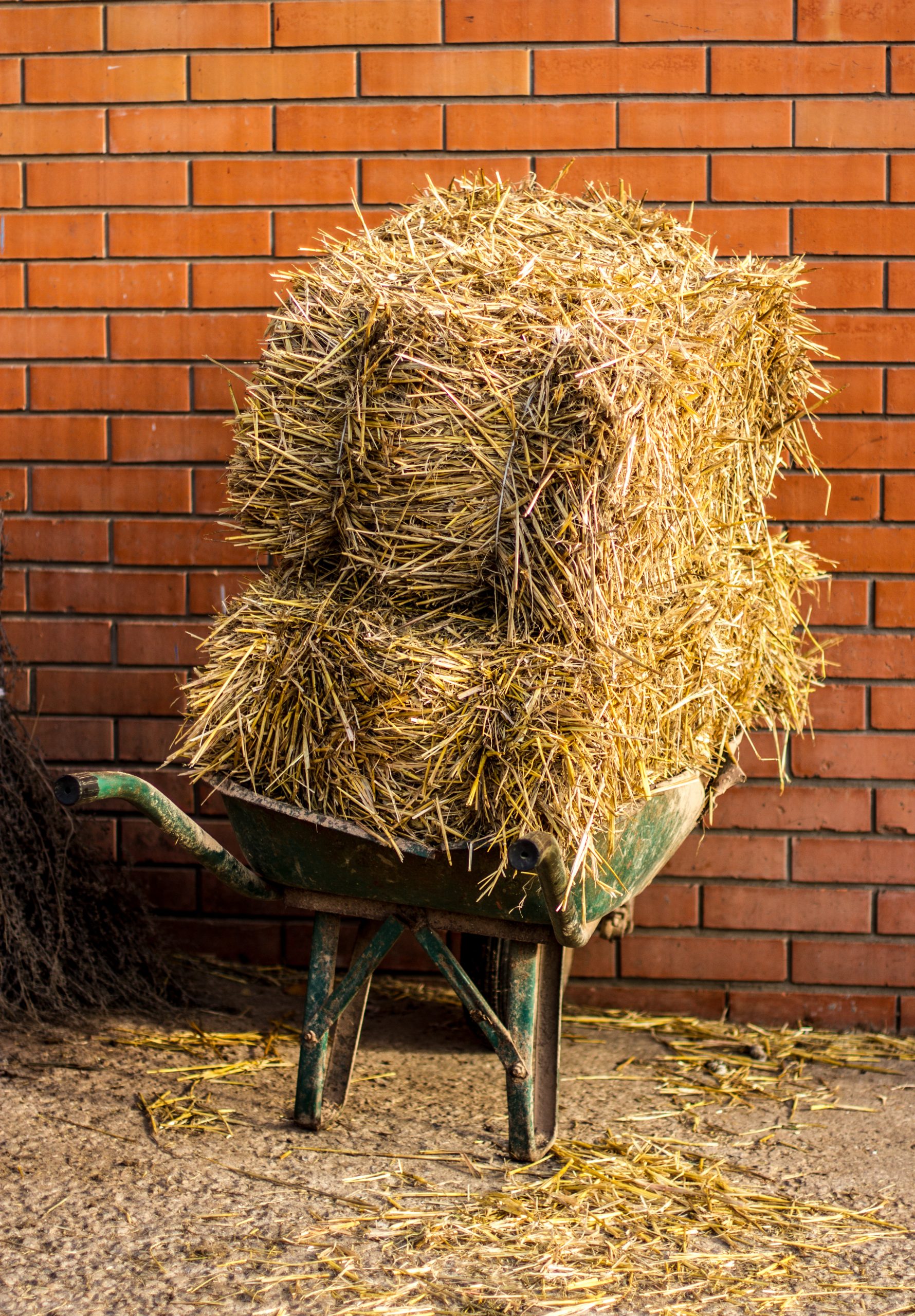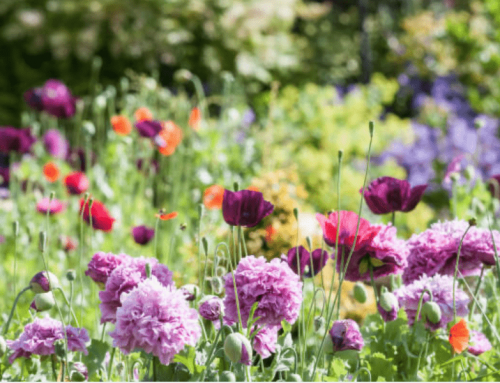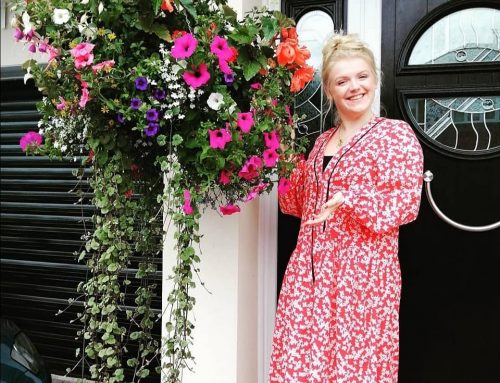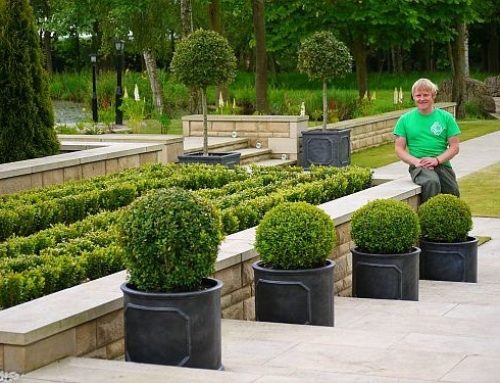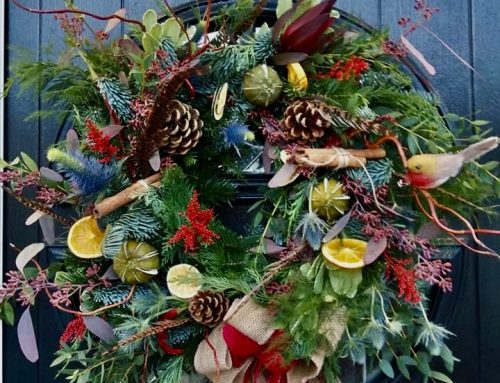Simple raised beds made from hay bales
This works in exactly the same way as a compost heap, except it happens inside the hay bale, creating the perfect environment for growing almost anything. This information was used to create a hay bale garden in Barnard Castle, Co Durham, but is just as well suited to more urban areas such as Middlesbrough, Stockton, or Darlington. That’s the beauty of Hay Bales. You don’t need an existing garden to grow things in them, they are self-contained growing areas.
The ultimate low maintenance simple raised beds
The great thing about using a hay bale rather than compost or a grow bag is that a lot of water is retained even when there are a few consecutive dry days. You don’t have to panic about keeping your plants or fruit and vegetables watered if you go away for a long weekend. Hay bale gardens really are a low maintenance solution for modern-d living. There is no excuse for even the hardened urbanite to not give “growing your own” a try. So if you live in Teesside and you want to create a Hay Bale garden, give Green Onion Landscaping a call.
If you’d like to get more ambitious, hay bale gardens are just like lego that grows. You can easily make an area that’s a bit bigger than a single bale, so you can expand your range of homegrown produce, you simply have to make a square from four or more hay bale. If you are a conventionalist at heart you can even fill the gap in the middle with peat-free compost so your plants or fruit and veg are growing in the soil, just like a normal raised bed, but you haven’t had to lift a spade, hammer a nail, or cut any wood for a frame! Gardening doesn’t get any simpler!
What’s so good about simple raised beds
One of the great advantages to using hay bales, rather than the usual wood planks to create your raised bed is that you can stack the bales to almost any height; so if you have a bad back and you can’t bend down easily, just make a hay bale base, then put another set of bales on top; this gives you a waist height raised bed garden that’s easy to manage and is accessible even if you can’t bend down.
Preparing simple raised beds
To get your hay bales ready for planting your first crops, you will first need to position them: they are a lot simpler to move when they are dry, so make sure you don’t let them get rained on before you have had a chance to move them to the position you want them in.
Once in place, all you need to do is water them with a garden hose two or three times weekly for three weeks. This gives the bales time to start composting and to absorb the maximum amount of water. The bales will need to be soaked right through each time you water them so don’t spare the water, and don’t try to move them once you have watered them: they will be way too heavy to move once they are wet. I can’t stress this enough, moving a waterlogged bale is a bad idea!
Tips for simple raised beds preparation
Setting your hay bales out in Winter is a great way to condition them with the minimum of effort. If you set them out in winter you won’t need to water them at all as the rain and snow will do it for you leaving your bales ready for you to plant into once Spring arrives without you doing a thing.
It’s also possible to aid the conditioning process by adding a thin (1″ or 2.5cm) layer of peat-free compost to the top of the bales. As you water them over the next few weeks this soil/compost will penetrate the hay bales, effectively making them into a giant grow bag; all you need to do come Spring is make a slit in the top of the bale with a spade and plant your seedlings directly into the hay bale.
Planting seeds into simple raised beds
If you are planting your seeds directly into the hay bale, it’s a good idea to sprinkle some compost or top-soil onto the surface under the seeds. When you make the slits for sowing you can put a handful of soil or compost in there too as this will help stop finer seeds from falling too deep inside the bale and getting lost. You could also use peat-pots placed into a slit in the hay bale, thus ensuring that your seeds don’t get too deep into the hay bale where they can’t germinate properly.
Advantages of hay bales as simple raised beds
Hay bales drain very well, so new gardeners need not worry about overwatering their new found land. It’s a mistake that many a new gardener makes, being a bit overzealous with the hose pipe. Because the hay bales drain so well they bring yet another benefit: root rot and many other damp related fungus and mold-related diseases are not such a problem. This makes hay bales especially good for growing pumpkins and strawberries, especially as slugs have a really hard time moving over the rough surface of the hay bale, so your precious fruits are protected from greedy garden pests without having to resort to chemical pellets.
Hay bales are also fantastic for getting air to the roots of your plants. It has been well documented that getting air to a plant’s root system will boost the plant’s ability to grow and enable it to thrive; if you are growing veg in a bale bed, be prepared for the most amazing vegetables. Some people report growing massive parsnips and baking potatoes for example as the hay provides a near-perfect environment for root crops; strawberries grow beautifully too, being constantly moist lets them flourish, but because of the surface of the bale is well-drained, they are less prone to rotting.
Hay bales and the boggy/wet clay garden
If you have heavy-clay, boggy areas or poorly drained soil in your garden, as is often the case in the “new build” areas that are springing up all over Teesside, especially near Stockton on Tees and Middlesbrough, building a hay bale raised bed right on top of the clay soil is a perfect solution. With hay bales, you won’t need to water as frequently anyway and the hay will soak up a fair bit of groundwater. Also, if you so have heavy clay, as the bales rot into the ground they will break up the clay and help condition the soil making it more useful for planting directly into over the next few years. This will require some spadework, however, although you could always get Green Onion Landscaping to do this for you!
How long does a hay bale garden last
Hay bale gardens can last for up to two years. The beauty of the hay bale system is that once the bales are finished you can simply add them to your compost heap or dig them into your garden. The tighter bound the bales are when you get them, the longer they will last in the garden. If you need advice on where to get hay bales in Teesside, just ask Green Onion’s garden experts.
What plants will grow in a hay bale raised bed?
Almost anything will grow in a bale bed. You can grow cabbages, pumpkins, strawberries, tomatoes, potatoes, etc. Tall plants will need canes to support them and you will need fairly long stakes so that you can push them deep into the bale to make them secure. These are available from most garden centres so you won’t have a problem finding them.
Deep growing root crops like potatoes will fair very well in a hay bale garden; you will no doubt have seen the ‘potato in a bag’ kits? These kits allow you to grow your own potatoes using a large canvas bag full of soil rather than a garden. Well, hay bales are like a professional version of those kits with the added advantage of the bale being less susceptible to over-watering (it’s easy to put too much water into your canvas bag and rot your potatoes). Also, Wire Worm are less likely to infest your crop, as they would if you planted directly into garden soil, so hay bales really do win all round. Do bear in mind however that you will have to break up the hay bale to harvest the potato crop. Many people plant potatoes in the final year of the bale garden, when it’s pretty much finished and will need breaking up anyway.
Final notes on hay bale gardening and simple raised beds
Bale gardens are a simple way to get into gardening and they make the joy of growing your own vegetables and fruit accessible to people who are otherwise unable to work in the garden. Bale beds are also quite unusual, so you will get the satisfaction of doing something that’s unique and innovative. They also generate no waste, so they are 100% environmentally friendly and you don’t need to use plant food either! They make an excellent summer project for kids and can be extremely educational as to the origins of food, how food grows, what is required for a plant to thrive etc.
If a landscaping project is a bit too much for you at the moment, but you would like to take your first steps in gardening, give simple raised beds a go, you have nothing to lose.


